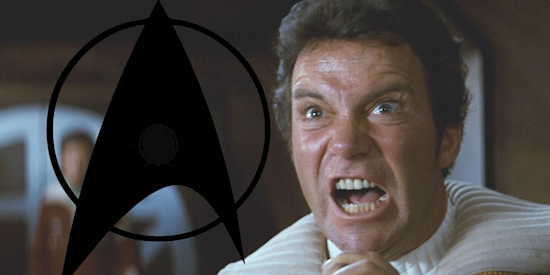Star Trek: Why Section 31 Divided The Fandom
The existence of Section 31 in Star Trek canon has echoed throughout the franchise, but the organization generates split opinion from fans. Introduced in the Deep Space Nine episode "Inquisition," Section 31 are essentially the Black Ops division of Starfleet. Where the likes of Kirk and Picard can pilot the Enterprise, representing the Federation by adhering to rules and principles as the friendly face of Starfleet, Section 31 tackle the organization's more morally gray missions. The group's name comes from the part of the Starfleet Charter that allows more extreme measures to be taken in certain dire circumstances, and "extreme measures" is Section 31's bread and butter.
Click the button below to start this article in quick view. Start nowGoing on to feature in both Enterprise and Star Trek: Discovery, Section 31 appear wherever the peace and stability of the Federation is put at risk, but the day can't be saved via official, legitimate means. Largely, this involves spying on potential future enemies and taking action if necessary and the unit's autonomy has often been a trigger for conflict between Section 31 operatives and regular Starfleet officers, with the latter arguing that secret division regularly acts against the values Starfleet claims to hold dear.
This sentiment is the very same point of contention some fans have with Section 31's inclusion in the Star Trek universe. The original creator of the franchise, Gene Roddenberry, was very clear in his vision of the 24th century. Roddenberry's Star Trek was set in a world where mankind had evolved beyond the need for conflict; Earth was a peaceful utopia where any differences were settled amicably. This is why members of Kirk's original Enterprise crew only fight among themselves when under the influence of an outside alien being or some such science fiction menace.
Hence the reason for a divide in the fandom. Those who hold Roddenberry's original canon gospel see the existence of Section 31 as a contradiction to the creator's philosophy and a sizable deviation from the story he set out. Ira Steven Behr, the writer who introduced Section 31 to Deep Space Nine, believed that Roddenberry's tranquil future would've come at a price, and that Earth could only enjoy such peace because someone, somewhere in the shadows was performing the necessary actions that no one else wanted to consider.
Both sides of the debate hold a certain amount of merit. On one hand, Roddenberry's idea that 24th century man would have moved beyond internal conflict is a core value in Star Trek's creation, and Section 31 undoes that principle by making Earth's peace the result of heinous activities rather than intellectual evolution. However, for Star Trek to remain relevant in the modern world and in order to appeal to a wide audience, the story needs to show elements of both light and darkness, and it could be argued that to remove or deny the uglier side of humanity is naive.
A third group of fans have no strong feelings either way, and are happy to accept how Section 31 alters Roddenberry's Star Trek canon, so long as its inclusion leads to strong stories and a more vivid, rounded fictional world.
Despite the controversy surrounding Section 31, the group's presence in the Star Trek world is only increasing, and a new spinoff series starring Michelle Yeoh is set to delve deeper into their inner workings. This new project could potentially help address some of the problemsStar Trek fans have always had with Section 31, by further exploring their origins and influence; perhaps even portraying them in a less clinical and unforgiving light compared to previous depictions. Equally, the new series could continue to sit uneasily alongside Gene Roddenberry's founding principles and prove that, three centuries later, mankind is the same as it always was.
Source: screenrant.com

